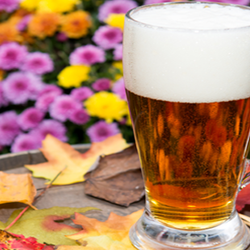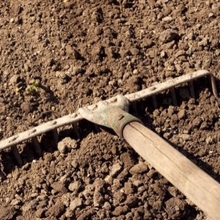(Editor's Note: This article was originally published on September 15, 2008)
Chamomile (Matricaria recutita)
Chamomile, one of the world's most popular herbs, makes a great tasting tea and is so easy to grow. Chamomile is naturally caffeine-free and has a distinctively apple-like flavor. In fact, 'chamomile' stems from the Greek word for "ground apple" [1]. Chamomile is used to alleviate the common cold, relieve inflammation from arthritis to toothaches, soothe stress and anxiety, and to help induce sleep [2].
To grow Chamomile successfully, you need a full sun spot with well draining soil. This annual will grow up to 2 feet tall and can withstand dry spells and less-than-perfect soil.
Once you have a patch of Chamomile growing, you aren't far from a healthy cup of tea. To make Chamomile tea:
Yerba Mate (Ilex paraguariensis)
Tea Plant (Camellia sinensis)
Lemon Balm (Melissa officinalis)
Rose Hips
 |
Rose hips make an excellent citrusy, tangy tea when brewed. Rose hips form at the base of rose flowers on rose plants, growing especially large and tasty on Rosa rugosa varieties. Allow roses to die naturally on the stem by not deadheading. As the hips form, they start out green, turn yellow and eventually ripen to a bright red usually after the year's first frost which is when you should harvest them [9]. Rose hips are an excellent source of Vitamin C, pound for pound better than oranges. Rose hip tea is said to be a cure for bladder infections, headaches and dizziness and also provide a good amount of Vitamins A, D and E along with antioxidants. |
|
To brew a fresh cup of rose hip tea, you'll need 5 rose hips per cup of water. Cut the hips in half and steep for at least 10 minutes and then strain [10]. |
Mint (Mentha genus)
| Mint provides an excellent stand-alone flavor as well as a good kick for other teas. All kinds of mint from the Mentha genus, such as Orange bergamot, spearmint and peppermint, are exceptional herbs for tea brewing. Most people find mint hard notto grow, so this is a great "grow-your-own-tea" choice. Because it can be very invasive, even in colder climates where it is hardy to Zone 3, it is probably best to grow mint in a container.
To brew an awakening cup of mint tea, use 1 to 2 tablespoons of coarsely chopped pre-washed mint leaves and pour 4 to 6 ounces of hot water over them in your tea cup. Steep for up to 5 minutes for a concentrated tea and strain through a fine sieve or coffee filter. You can add more hot water to taste or add ice for a crisp, cooling summer beverage. If you want mint to be a secondary flavor to another tea such as green or chamomile, follow the directions for steeping of the other tea and add in 1 tablespoon of fresh mint leaves and strain as necessary [11]. |
 |
 |
 |
|
Spearmint |
Peppermint |
Orange Mint, Chocolate Mint, Lemon Mint, Apple Mint |
| Spearmint tea is widely used as a cure for stomach aches and has recently been researched as a remedy for hirsutism (excessive hair growth in women) [12]. | Peppermint tea can be used as a tonic for indigestion and other digestion problems such as Irritable Bowel Syndrome, menstrual cramps, colds, and tension headaches [13]. | Mint also comes in different flavors such as orange, chocolate, apple and lemon. Each of these makes an excellent brew with a slightly different tinge of flavor. |
Please Note:
|
As with any herbal remedies, please do not substitute this article's information for a doctor's advice. Please do your own research or consult with a physician before beginning any herbal treatment. This article is strictly meant to inform you about how you can grow your own teas at home. |
Sources Cited
1. http://www.teamuse.com/article_050201.html
2. http://ri.essortment.com/chamomileteas_ryrf.htm
3. http://ezinearticles.com/?Home-Grown-Chamomile-Tea&id=707351
4. http://www.altnature.com/gallery/chamomile.htm
5. http://www.azarius.net/smartshop/growing/other_seeds/yerba_mate_seeds/
6. http://en.wikipedia.org/wiki/Yerba_mate
7. http://www.hgtv.com/landscaping/homegrown-tea/index.html
8. http://www.theepicentre.com/Spices/lemonbalm.html
9. http://www.seedsofknowledge.com/rosehips2.html
10. http://coffeetea.about.com/library/weekly/aa021003rosehips.htm
11. http://lancaster.unl.edu/food/ciq-minted-tea.shtml
12. http://en.wikipedia.org/wiki/Spearmint
13. http://www.umm.edu/altmed/articles/peppermint-000269.htm
PDB Photo Credits:
| Tea Plant thumbnail- weeding | Tea Plant- growin | Orange Bergamot Mint- jadewolf |
| Chamomile- poppysue | Rose Hips- KMAC | Peppermint- bill_casey |
| Yerba Mate- lunavox | Spearmint-salvia_lover | Lemon Balm- salvia_lover |





















